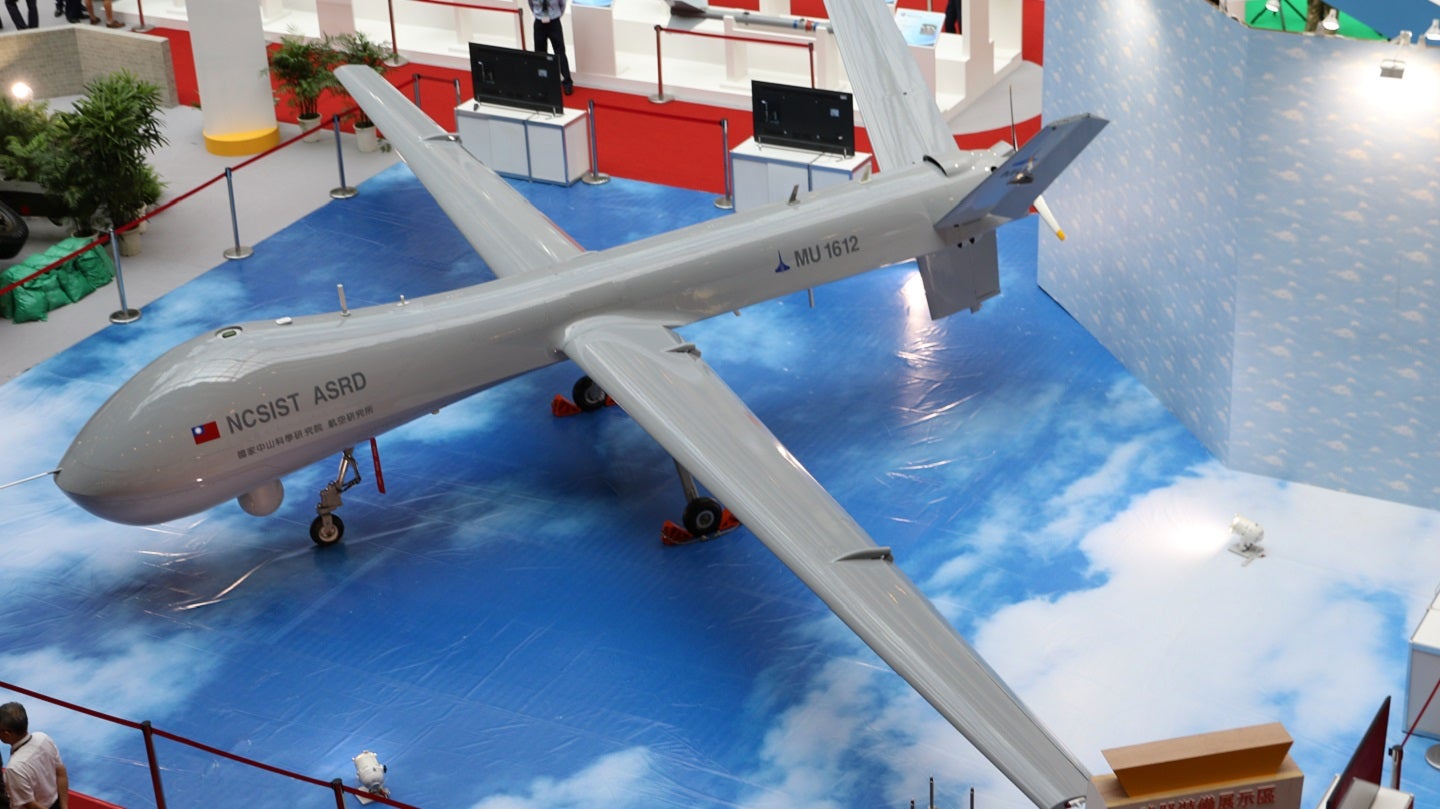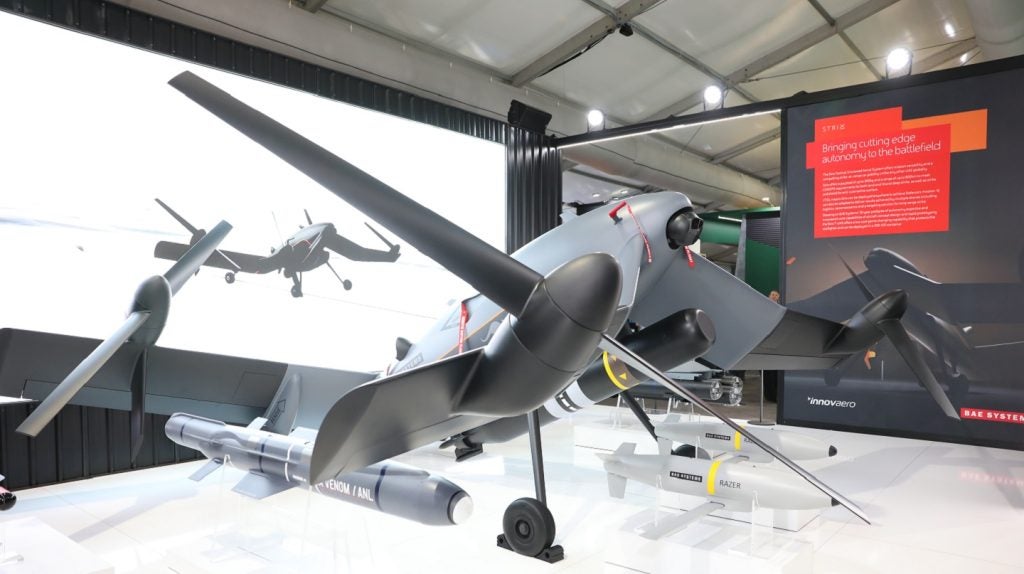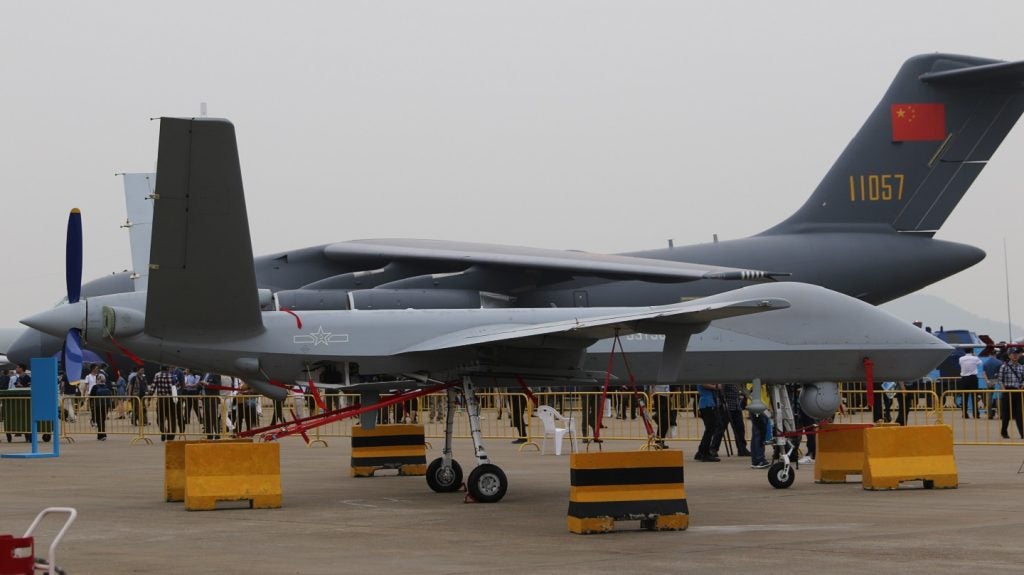
The Asia-Pacific regional market for UAVs is a complex mix of indigenously developed designs and platforms acquired from external suppliers, but which country is taking the lead in this key sector? Gordon Arthur reports.
Russia’s invasion of Ukraine provided militaries a timely reminder that uncrewed aerial vehicles (UAV) are a vital capability, whether for intelligence, surveillance and reconnaissance (ISR) or carrying weapons for precision strikes.
Asia-Pacific militaries have similarly been reminded of shortcomings in their UAV inventories. Countries like Australia and India are in the midst of important procurements, while others such as China, South Korea and Taiwan are already developing and manufacturing advanced systems.
Australia’s uncrewed mix
Australia’s military is pursuing both imported and indigenously developed UAVs. An eye-catching platform at the recent Avalon Airshow 2023 was Boeing Defence Australia’s MQ-28A Ghost Bat. This loyal wingman has made substantive progress since its 2019 debut; it achieved its maiden flight in February 2021, and the first systems could enter Royal Australian Air Force (RAAF) service in 2024/25.
In May 2022, Canberra promised seven additional MQ-28As would be procured for $319.3m, on top of three aircraft ordered in March 2021. Export prospects are part of Boeing Defence Australia’s ambitions, although the RAAF as launch customer remains the focus.
How well do you really know your competitors?
Access the most comprehensive Company Profiles on the market, powered by GlobalData. Save hours of research. Gain competitive edge.

Thank you!
Your download email will arrive shortly
Not ready to buy yet? Download a free sample
We are confident about the unique quality of our Company Profiles. However, we want you to make the most beneficial decision for your business, so we offer a free sample that you can download by submitting the below form
By GlobalData
More than 70% of the 11.7m-long aircraft comes from Australian suppliers. It has a range of 3,700km and possesses an internal payload bay, the plan being that they work alongside fighters to gather data, jam enemy radars/communications and launch attacks.
BAE Systems Australia unveiled its ungainly-looking Strix at Avalon Airshow 2023, just seven months after the concept was mooted. The Strix is a hybrid tandem-winged unmanned combat aerial vehicle (UCAV), with partner Innovaero Technologies now constructing a prototype in Western Australia for a maiden flight in Q4. This is extremely rapid development, with BAE Systems wanting the Strix operationally ready by 2025-26.
Kisa Christensen, BAE Systems Australia’s director of Red Ochre Autonomy and Sensors, explained: “Our teams in essence have created a platform that has three dimensions. It is disruptive, adaptable and deployable.”
Designed to operate from space-constrained sites or naval vessels (a system fits inside a 20-foot container), the VTOL Strix is aimed at both domestic and export markets. Developed wholly within Australia, it can perform anti-submarine warfare, armed escort of helicopters, ISR, border surveillance, electronic warfare and precision strikes.
In flight the Strix can reach 200kt (cruise speed is 140kt) via a gas turbine and four electrically powered variable-pitch propellers. In purely ISR configuration, it can fly 1,600km, the range reducing to 500km with a 250kg payload. The lead engineer told Airforce Technology that the gull wings may be straightened later if smaller propellers are adopted.

Although the Ghost Bat and Strix represent Australian innovation, the country’s military still relies on foreign platforms. For example, Elbit Systems announced last December its Skylark I-LEX had been procured by the Australian Army.
The army is upgrading capabilities via Project Land 129 Phase 3 too, for which Insitu Pacific is supplying Integrators to replace Shadow 200s. A $223.4m contract will see 24 aircraft delivered in 2023-24. Although the Integrator is American, Insitu Pacific predicts indigenous content will reach 82%. More than 20 local suppliers include Orbital UAV for V3 engines, and Ascent Vision Technologies for CM234 Spitfire gimbals.
Andrew Duggan, Insitu Pacific’s managing director, noted: “They’ve got a pretty aggressive plan to make sure the technology keeps getting refreshed rapidly.” Duggan explained it will be necessary to upgrade sensors every 2-3 years, whereas airframes have a ten-year lifespan.
As for the Royal Australian Navy (RAN), last year it selected Schiebel’s S-100 Camcopter as its shipboard platform. Raytheon Australia heads the fast-track programme, and Fabian Knechtl, Schiebel Pacific’s managing director, hopes a Project Sea 129 Phase 5 Block 1 contract will be signed before year’s end.
Knechtl said no decision has been made on the number of UAVs being procured, though the RAN talks about eight capability bricks, with Schiebel Pacific expecting each brick to consist of 2-3 aircraft. Sea 129 Phase 5 will span 30 years, with five-year rolling block upgrades occurring to incorporate new technologies.
India’s wake-up call
India’s UAV wake-up call came well before the Ukrainian invasion did, crossing its Rubicon when the People’s Liberation Army (PLA) confronted Indian troops in Eastern Ladakh in mid-2020. Those tensions reinforced the need for suitable UAV platforms.
India has struggled to field larger indigenous UAV designs – the Nishant tactical UAV and delayed Rustom-2/Tapas BH-201 medium-altitude long-endurance (MALE) programme being examples of this. The Indian Navy is currently leasing two MQ-9Bs from the US, but India has previously talked about procuring up to 30 Reapers for all three services, though this number will reduce because of financial constraints.
Nonetheless, abundant opportunities exist for local companies to supply less sophisticated UAVs to India’s military. Since the 2020 border conflict, fast-tracked tenders, routinely for hundreds of UAVs, have fallen under the Buy (Indian) procurement category.
A flurry of requests for information (RfI) appeared in October 2022, for example, the first for 750 VTOL UAVs for Parachute (Special Forces) battalions. Next, the artillery branch needed 80 mini-UAVs with a flight range of 15+km. Furthermore, the Indian Army sought 1,000 rotary-winged surveillance UAVs to monitor borders.
Then, last December, the Indian Army issued an RfI for 570 logistics UAVs in standard and high-altitude versions. In January, the Indian Army published a request for proposals (RfP) for 130 tethered UAVs suitable for persistent surveillance. This was followed in February by an RfP for 850 nano-UAVs.
Such large-scale tenders illustrate the huge demand for UAVs in India. IdeaForge has already delivered hundreds of 15km-range Switch UAVs to the army, while NewSpace Research and Technologies completed delivery of 100 autonomous surveillance and armed drone swarm UAVs in March. This $15m tender included Beluga hexcopters and Nimbus Mk-III quadcopters.
NewSpace is also collaborating with Hindustan Aeronautics Limited (HAL) to develop a solar-powered high-altitude pseudo-satellite aircraft, plus the twin-engine CATS Warrior loyal wingman that should commence flight tests next year.
China: leading the region
China is Asia’s leading proponent of UAVs, emerging as a prolific exporter, with UCAVs such as the Wing Loong and CH series sold to regimes across Asia, Africa and the Middle East.
The Zhuhai Air Show offers a biennial smorgasbord of UAV designs, and the most recent iteration in November 2022 did not disappoint. AVIC exhibited two new UCAVs, the Wing Loong III and Wing Loong 10, with the former featuring a maximum take-off weight of 6,200kg, which is 2,000kg more than its predecessor.
Possessing a 10,000+km range and endurance of 40+ hours, AVIC is getting ready for production. The Wing Loong III measures 12.2m long, has a 24m wingspan and features nine external hardpoints.
Meanwhile, the jet-powered Wing Loong 10B with 10m wingspan is a high-altitude long-endurance UAV now in PLA Air Force service as the WZ-10. Previously known as the Cloud Shadow, it can carry a 400kg payload, or act as an electronic reconnaissance UAV. Its antennas could locate US Navy ships as part of a surveillance network, for example, helping direct DF-21D anti-ship ballistic missiles onto enemy vessels.

Other interesting UAV designs at last year’s Zhuhai included the China Aerospace Science and Technology Corporation (CASC) CH-7 stealth UAV with 26m wingspan and maximum take-off weight of 10 tons. Another mysterious stealthy UAV was the Cloud Shadow CS-5000T with blended-wing design.
Yet another newcomer was a near-space hypersonic technology testbed called the MD-22. Measuring 10.8m long and with a 4-tonne maximum take-off weight, the Chinese Academy of Sciences predicts the developmental MD-22 will reach Mach 7.
East Asia focus
Japan trails its neighbours, although it does field US-manufactured ScanEagles and RQ-4B Global Hawks. However, to the military’s detriment, Japanese industry has not prioritised UAVs at all.
Nearby South Korea is a different story, with a vibrant UAV industry thanks to Korean Air Aerospace Division (KAL-ASD) and Korea Aerospace Industries (KAI). A major programme under way includes a corps-level UAV (with both ISR and armed versions) for the Republic of Korea Army.
Another is the Reaper-like KUS-FS MALE platform for the ROK Air Force. KAL-ASD first flew it more than a decade ago, but technical issues have delayed series production. As well as a standard ISR type with 24-hour endurance, an armed variant has been spotted in testing.

Another project is KAL-ASD’s Kaori-X stealthy UCAV; it is predicted to be ready by 2025. Additionally, last August, Korean Air was appointed preferred bidder to develop a new loyal wingman. The envisaged KUS-LW will see 3-4 loyal wingmen supporting individual fighters like the KF-21.
Taiwan, threatened by a bellicose China, has been more aggressively pursuing UAV development in the past few years. In mid-March, the National Chung-Shan Institute of Science and Technology (NCSIST) displayed several new UAVs nearing completion. One was the Albatross II with 300+km range and 16-hour endurance for maritime surveillance and reconnaissance.
Another was the Cardinal III hybrid UAV featuring three propellers; it can conduct battlefield surveillance missions with its EO/IR sensor and laser rangefinder. NCSIST has also developed the Harop-like Chen Hsiang loitering munition and Teng Yun MALE UAV.
Market growth in key region
According to GlobalData, the global military UAV market size was measured at $7.9bn in 2022 and was expected to grow at a compound annual growth rate of more than 4% up to 2032. Of this, the Asia-Pacific region, supported by China, India, Australia, Japan, and South Korea, with their multi-year procurement programmes, was expected to lead the investment in the sector globally, exhibiting a steady pace of growth over the forecast period.
Within the region there exist important pockets of innovation and indigenisation, while recent conflicts have underscored how UAVs are an essential tool in any Asian military arsenal.







